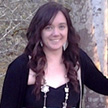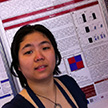Related Questions
- My blood groop is o- and my brother is o +so do I have a good blood grouping because my mum needed a injection when my
- how do you found out when some have blood cancer and what test do you use
- Can your blood type also help you get this terrible disease?
- How many blood cells are in the average human body?









Blood groups are classified by the ABO system and the Rh (Rhesus) type system. The four blood groups are A, B, AB and O. Each blood group is either Rh-positive or Rh-negative. So that means there are 8 different blood types.
A person’s blood group is determined by a pair of genes, one each inherited from their mother and father. Each blood group is identified by its own set of molecules (called antigens), which are located on the surface of red blood cells called either A or B. if they have none they are blood type O. When a person needs a blood transfusion, it is important that the donated blood matches their particular blood group, or the body will recognise those antigens much like they would a bacteria and launch an attack against the donated blood.
similarly, if you are Rh-negative and you are given Rh-positive blood, you will have a bad immune response. This actually happens to Rh-negative women when they are pregnant with a baby with Rh-positive blood as the mum will share her antibodies against the Rh-ppositive cells with the baby through the placenta making the baby very sick. Thankfully science has come to the rescue, and these women can be immunised agaisnt the wrong type of blood in their baby thorughout the pregnancy so they can carry the baby to term.
According to the Australian Red Cross Blood Service, the percentage of blood group frequency in Australia is:
O positive – 40 per cent
O negative – 9 per cent
A positive – 31 per cent
A negative – 7 per cent
B positive – 8 per cent
B negative – 2 per cent
AB positive – 2 per cent
AB negative – 1 per cent
O Rh-negative called simply O negative blood type are the universal donors as their antigens aren’t recognised as foregin by people with any other blood types
now you get your genes from your parents, one from your mum and one from your dad. So let’s say your mum is A (Rh) postive and your dad is AB (Rh) negative.
now what we need to bear in mind is that if you have even one copy of the Rh-positive gene from a parent it is enough to make the rhesus protein, and therefore you would be a Rh-positive blood type
so if your mum is A + then she is AA ++ and your dad is AB – – or perhaps AB – +
So there is 50% chance of being A blood type and 50% chance of being AB blood type. now if your dad is AB – – 100% of their children will be Rh-positive blood type, but all of them will carry the Rh-negative gene and could pass it onto their own children. if your dad is AB – + then 100% of the children will be Rh-postive blood type and 25% will be carriers of the Rh-negative gene
I know that was a bit complicated but i hope you could follow some of it. feel free to ask follow up questions in the comments!
0
Miranda’s done a fab job of answering.
I’ll just add a link to the Red Cross blood service website where they have a couple of graphs and tables which might help make it a little clearer.
https://www.donateblood.com.au/about-blood/types
0